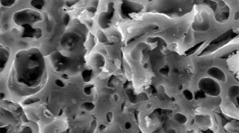

 Comptes Rendus Palevol
14 (3) - Pages 219-232
Comptes Rendus Palevol
14 (3) - Pages 219-232A new research of prehistoric Delphi (Koumoula site, Parnassus Mountain) based on the absolute dating of an archaeological ceramic assemblage and stonewalls from recent rescue excavation is presented using luminescence techniques. For the chronological estimation of the ceramic assemblage, optically stimulated luminescence (OSL) and thermoluminescence (TL) protocols were employed, and the surface luminescence dating technique was applied on excavated calcitic rock samples. Dosimetry studies (field and laboratory) were practiced using a combination of a portable calibrated Geiger scintillator, alpha counting (pairs technique) set up and scanning electron microscopy (SEM/EDS), the latter also to probe information about the chemistry and firing conditions of the ceramics. The results of the study provided dates that ascribe the site to the Greek Neolithic and Early/Middle Bronze Age (∼ 2000 to 5000 years B.C.), forming an absolute chronological framework for the studied area; moreover, these first prehistoric data provide archaeological links for the parallel use of the site with the nearby Corycian Cave habitation.
Prehistory, Delphi, Luminescence dating, Ceramics, Stones, SEM/EDS